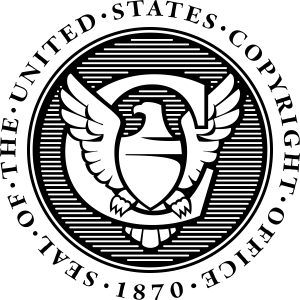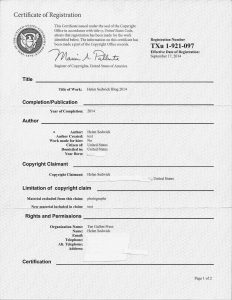The case Fourth Estate Public Benefit v. Wall-Street.com LLC, et al., pending before the U.S. Supreme Court (see the official docket files here), deals with an apparently technical and narrow issue. It nevertheless raises some questions of principle in the field of copyright – it also helps to understand the differences between several intellectual property rights.
The facts of the case seem to suggest that this is not a major case. Indeed, the petitioner Fourth Estate is a news organization that licenses its content to other outlets. According to the petitioner, Wall-Street.com obtained a license to distribute petitioner’s works, but continued to distribute them after the license expired. Immediately after filing an application for copyright registration with the U.S. Copyright Office (see the official site and its presentation on wikipedia), Fourth Estate sued Wall-Street.com for copyright infringement.
The question at issue is whether a copyright owner, to seek relief for copyright infringement, has to wait until a certificate of registration is delivered by the U.S. Copyright Office. The ‘certification approach’ subjects the possibility to initiate civil proceedings to the delivery of this certificate, as if the copyright effect is suspended to this administrative act. This contrasts with the ‘application approach’ according to which it is sufficient for the copyright holder to file its application and to complete the process by making a deposit of the required copies and by paying the registration fee.
This seems to be a cumbersome issue about the formalities (in this case the registration) that the U.S. copyright law still requires. The respondent (Wall-Street.com) considers that the question lacks sufficient importance to merit review by the SCOTUS. But some groups view it differently: for instance the American Bar Association has filed a brief as amicus curiae to support the petitioner (Fourth Estate).
The whole issue turns around the right interpretation of subsection 411(a) of the U.S. Copyright Act which states that “no civil action for infringement of the copyright in any United States work shall be instituted until preregistration or registration of the copyright claim has been made accordance with this title”. At first, the interpretation of this provision seems straightforward, and its practical importance very modest. Is thus this case just about “a tempest in a teapot” (to use the formula of Professor Melvine Nimmer, the author of the leading copyright commentary in the U.S.)?
The questions below attempt to bring forward the issues of principle posed by the case:
1. What is the approach (the ‘certification’ or the ‘application ‘approach) that is more aligned with the purposes of copyright? The response of course requires to identify those purposes (so need to dig into a literal analysis of the above mentioned provision of the Copyright Act and of the “make registration” language). The response also requires to think about the role of registration – and the reasons for making the right to sue for copyright infringement potentially contingent on effective registration.
2. In Europe, as is known, copyright formalities do not exist, although some formalities, such as the deposit of a few copies (for ex. books at the national library) do exist outside copyright law. But the copyright approach to formalities is worth to compare with trademark law. Why don’t we have in Europe an obligation to register the copyrighted work with an administration, while registration (with the EUIPO or the Benelux IP Office for instance) is required for trademarks? Is there a justification for this difference between copyright and trademark law?
3. The international framework, in particular Article 5(2) of the Berne Convention (BC), provides that “the enjoyment and the exercise of these rights (the rights within the copyright bundle) shall not be subject to any formality“. Is the U.S. copyright system and its rule on registration compatible with Article 5(2)BC?
4. Under U.S. copyright law, are foreigners also subject to the rule contained in subsection 411(a)? If Belgiumn were to opt for a registration system (in case this would be compatible with Article 5(2) BC), would there be a possibility to impose such registration for Belgian authors and not for foreigners?
5. In Europe, what is the rule concerning trademark proceedings; can a civil action for trademark infringement be submitted immediately after the filing of a trademark application, and thus before the registration of the trademark? Did the rule change under Benelux law over the last decades?
6. What is the difference between patent law and copyright law with regard to the starting point of the protection (and thus the possibility to initiate an infringement action)?




